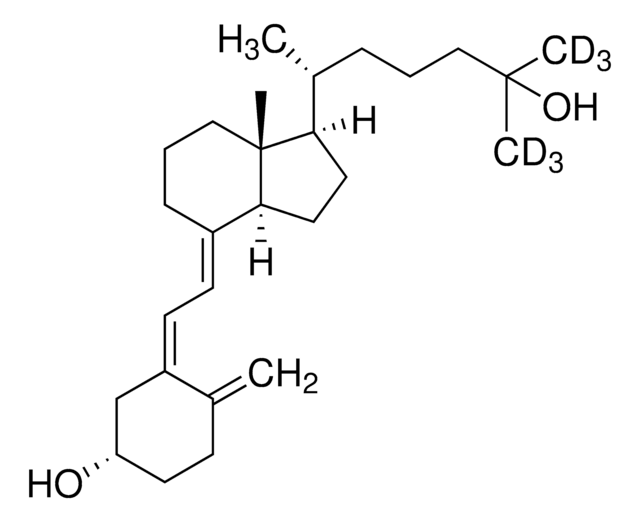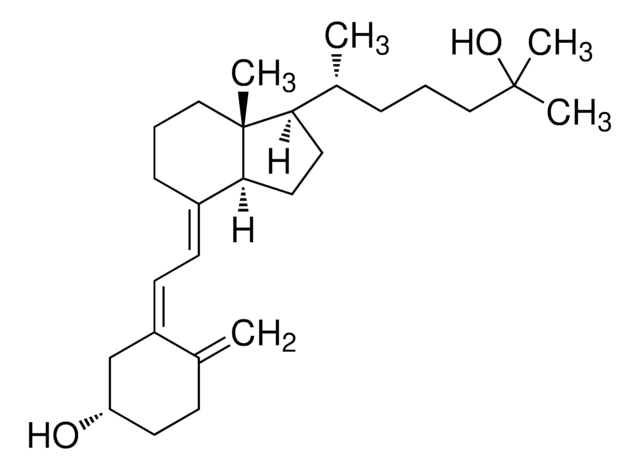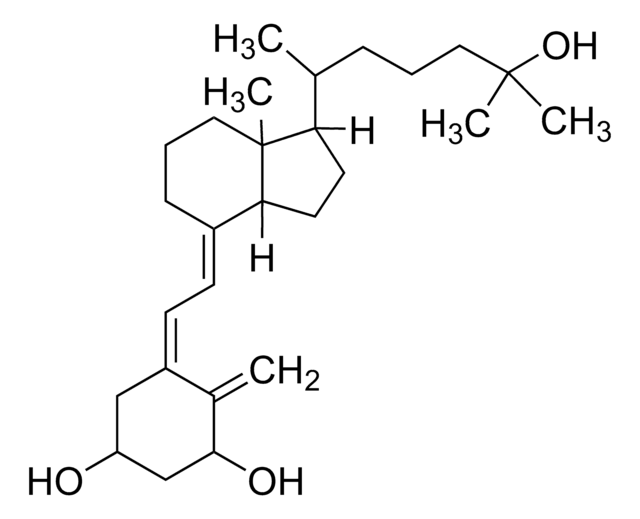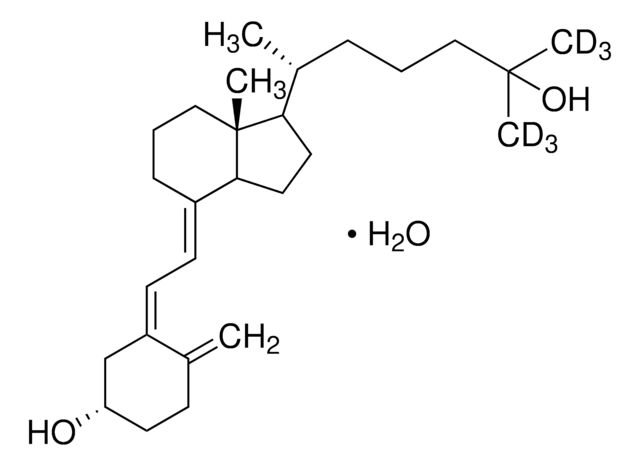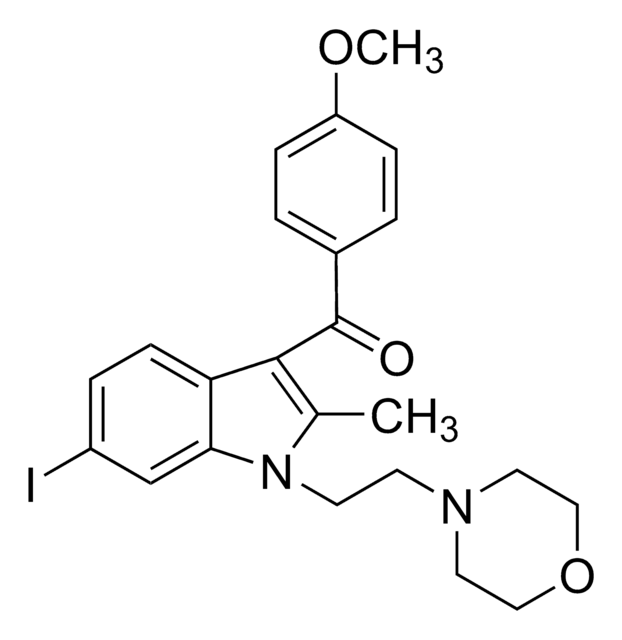870450O
Avanti
2-AG
Avanti Research™ - A Croda Brand 870450O
Synonym(s):
2-arachidonoyl glycerol
About This Item
Recommended Products
form
liquid
packaging
pkg of 1 × 5 mg (with screw cap/argon/foil bag (870450O-5mg))
manufacturer/tradename
Avanti Research™ - A Croda Brand 870450O
lipid type
bioactive lipids
phosphoglycerides
shipped in
dry ice
storage temp.
−70°C
SMILES string
[H]C(CO)(OC(CCC/C=C\C/C=C\C/C=C\C/C=C\CCCCC)=O)CO
InChI
1S/C23H38O4/c1-2-3-4-5-6-7-8-9-10-11-12-13-14-15-16-17-18-19-23(26)27-22(20-24)21-25/h6-7,9-10,12-13,15-16,22,24-25H,2-5,8,11,14,17-21H2,1H3/b7-6-,10-9-,13-12-,16-15-
InChI key
RCRCTBLIHCHWDZ-DOFZRALJSA-N
General description
Packaging
Legal Information
Storage Class Code
12 - Non Combustible Liquids
WGK
WGK 3
Regulatory Listings
Regulatory Listings are mainly provided for chemical products. Only limited information can be provided here for non-chemical products. No entry means none of the components are listed. It is the user’s obligation to ensure the safe and legal use of the product.
JAN Code
870450O-VAR:
870450O-BULK:
870450O-5MG:
Certificates of Analysis (COA)
Search for Certificates of Analysis (COA) by entering the products Lot/Batch Number. Lot and Batch Numbers can be found on a product’s label following the words ‘Lot’ or ‘Batch’.
Already Own This Product?
Find documentation for the products that you have recently purchased in the Document Library.
Customers Also Viewed
Our team of scientists has experience in all areas of research including Life Science, Material Science, Chemical Synthesis, Chromatography, Analytical and many others.
Contact Technical Service